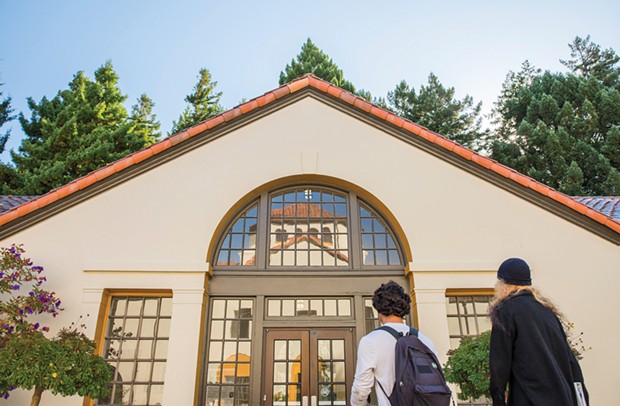[
{
"name": "Top Stories Video Pair",
"insertPoint": "7",
"component": "17087298",
"parentWrapperClass": "fdn-ads-inline-content-block",
"requiredCountToDisplay": "1"
}
]
It was with no small amount of alarm that we watched a seemingly large rift emerge between those tasked with keeping us all safe during a pandemic — Humboldt County Public Health — and what's arguably the region's most important institution — Humboldt State University.
Those wanting the specifics can read more on page 6 but the scene played out basically as follows: Four days after the governor's office released its guidelines for institutes of higher education and four days before nearly 800 students were slated to begin arriving at HSU's on-campus housing, Health Officer Teresa Frankovich warned HSU President Tom Jackson that returning students to campus wasn't safe given local COVID-19 infection rates and limited testing capacity. Jackson responded that Frankovich's concerns were "noted" before asking her to hold his proverbial beer while he reopened campus, warning that any attempts to use her authority to "obstruct" his plans could result in the loss of hundreds of local jobs and cost the economy millions in spending.
Plainly, it was not a great look for the leader of an institute of higher education, especially from a relatively new administrator who showed up a little over a year ago talking about "healing" and "transparency."
Let's make a few things clear from the outset: HSU is a vital part of Humboldt County, the cultural and economic impacts of both deeply intertwined. We view HSU's students similarly to be vital members of this community, with just as much standing as the rest of us and the real potential to become decades-long residents who start businesses, raise and/or teach children here, care for our sick, get elected to public office and generally continue to push us forward. We've written about all this before, as we likely will again.
But HSU's vital importance to the region does not set it apart. As we've seen in recent years, what happens off campus can have jolting impacts on HSU's grounds, just as actions taken on campus can reverberate throughout the local community. And COVID-19 similarly doesn't recognize arbitrary boundaries and borders. There is simply no question we are truly on this path together, no matter how invincible or vulnerable we may feel, or what economic pressures we may be under.
For months now, Frankovich has pointed to travel as one of the primary drivers of local infections. The most recent example of this is in the eastern portion of the county, where one family's trip out of county has reportedly resulted in dozens of infections. So it's not unreasonable to be concerned that a local institution plans to bring nearly 800 people from all reaches of the state — some with infection rates 10 times that of Humboldt's — into congregate living settings. And while we appreciate HSU's requiring all those moving into on-campus housing to sign a "social responsibility commitment" indicating they will abide by the rules of quarantine, we also realize these aren't terribly different from the pledges every batch of incoming students sign promising they won't smoke weed or drink alcohol in campus housing.
This is all to say we sincerely hope Jackson is right. We hope every last one of those nearly 800 students takes their quarantine seriously and that the university has the health and safety protocols in place regarding meal deliveries and shared bathrooms to ensure that any student who comes onto campus with the virus is isolated before they infect anyone else. We hope that despite all the many challenges that lie ahead, this is a banner year on the road to a more fiscally stable HSU.
But we also know that COVID-19 is an insidious foe — one we've seen move quietly in clusters before overwhelming public health apparatuses and healthcare systems in other areas. And we know we are a county of limited means in a world of need. We recognize putting most of our 120 tests a day toward surveillance of HSU's students means skilled nursing staff, healthcare workers or teachers re-entering classrooms aren't getting tested. We recognize that a large cluster anywhere could quickly overwhelm our limited capacity for contact investigations and, ultimately, our limited number of intensive care beds.
This is all to say if our health officer warned an action we were contemplating risked increasing "transmission risk enormously" or posed "a potential tipping point for overwhelming the system," we'd be inclined to listen.
Jackson, however, chose a different route. In a few weeks, we should have a pretty good idea how that's working out for him, as well as the rest of us. Whatever the outcome, it will be his to own.
Thadeus Greenson (he/him) is the Journal's news editor. Reach him at 442-1400, extension 321, or [email protected]. Follow him on Twitter @thadeusgreenson.
Comments (2)
Showing 1-2 of 2
more from the author
-
UPDATE: Artillery Shell Deemed Safe in Ferndale
- Apr 12, 2024
-
Turning the Titanic
Cal Poly Humboldt recognized for leadership in addressing global plastics crisis
- Apr 11, 2024
-
Our Last Best Chance
- Apr 11, 2024
- More »
































